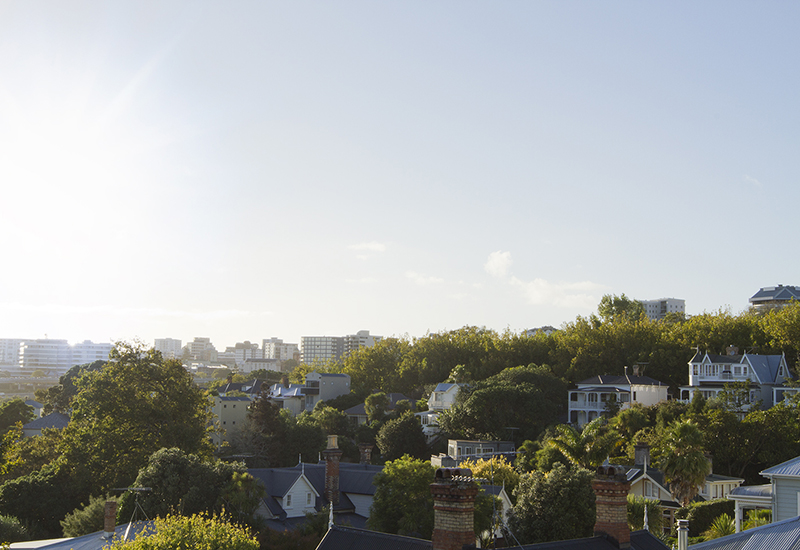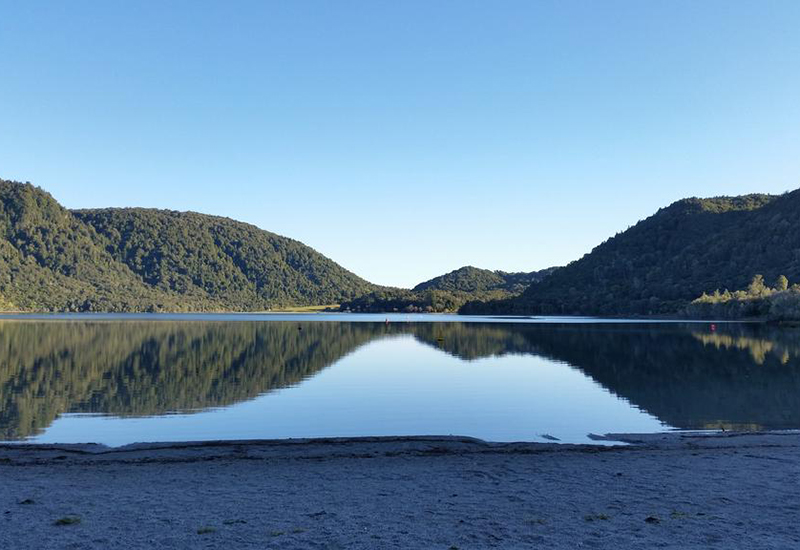The wonder solution to the massive climate, population and resource challenges? Expanding your view and joining things up.
It may sound glib but there is a rapidly increasing focus in New Zealand, and globally, on taking a systems approach to many of life’s biggest problems and turning them into opportunities: moving from viewing things in isolation or in silos and looking at the bigger picture.
Why would we want to take a systems approach? Because we can deliver significantly more with existing resources and we can reduce the risk of unintended consequences of the wider impacts of our actions.
Starting to think in a more systemic and holistic way could begin as small as deciding to drink a glass of tap water rather than buying a bottle of water. Taking a narrow view, the decision is primarily one between convenience and cost, as both meet the primary objective of quenching your thirst. However, with an expanded view, we understand that the bottled water causes damage to the planet and potentially to your health, and our decision may be altered.
However, systems approaches really come into their own when decisions needed address large and complex issues. Over the past few months we have seen several nations set dates for banning the sale of fossil fuel based vehicles. Again, when we look beyond the primary objective of mobility we see that these vehicles cause massive damage to the planet and to our health. The Norwegian’s lead the charge here with their goal that all new cars sold by 2025 be zero (electric or hydrogen) or low (plug-in hybrids) emission.
Some high-profile global companies currently producing mass disposable products, like Unilever, IKEA and Apple are seeking to move to a circular economy model and step beyond the current “take, make and dispose” extractive industrial model. Relying on system-wide innovation, with a circular economy approach these companies aim to redefine products and services to design out waste, while minimising negative impacts.
Social investment, while still at an early stage, is a great example of systems solutions currently being piloted across the country. This approach is based on taking an expanded view by investing in outcomes and supporting joined-up delivery of those outcomes. For example, the government paying for improvements in an individual’s health rather than for the number of visits to the doctor. With NZ$34 billion per year of public spending on social services, this approach could deliver huge financial savings and greatly improve life outcomes for those most in need. More on this later.
Systems approaches are also urgently needed for two of our biggest national issues, the quality of our housing and of our natural waterways. Poor quality housing leading to serious health and wellbeing issues is not that difficult to resolve by understanding that one leads to the other. The return on investment for building better quality homes and for retrofitting existing poor quality homes is positive when we take into account the return in terms of physical health, mental health, improved academic achievement and overall quality of life.
Equally, not understanding the wider impact of intensive agriculture on our waterways and natural environment has led to a situation that is shocking and unacceptable to most. Much of the dialogue has been binary, pitting economic growth against environmental standards. By taking an expanded view we can find a balance of interventions that support both environmental and economic outcomes, such as reducing the most intensive farming practices, planting riparian forests and considering soil inputs.
Drivers for systems change
There are different drivers for taking a systems approach but most start with a complex problem or opportunity and the need to have multiple organisations involved in solving or exploiting them.
The most far reaching initiative driving systems change is the 2030 Agenda for Sustainable Development and its set of 17 Sustainable Development Goals (SDG’s). Adopted by the 194 countries of the UN General Assembly in late 2015, the SDG’s are a universal call to action to end poverty, protect the planet and ensure that all people enjoy peace and prosperity. Such ambitious aims come with the understanding that the goals are interconnected and better ways of working together across systems are essential. In fact, Goal 17 is focused on the partnerships and systems interventions necessary to deliver the other 16 goals.
My personal experience of applying systems approaches over the last dozen years has been in three organisations in Europe, the first in regeneration, the second in sustainable cities and the third in climate change.
The regeneration agency, London Thames Gateway Development Corporation, took a systems approach to help ensure the significant capital investment being made, in an area of high deprivation, delivered a balance of social, economic, environmental and cultural outcomes. It was important that the public money being spent delivered as much as possible for the long term success of the local community across competing priorities.
The sustainable cities organisation, Institute for Sustainability, was established when a broad range of leading organisations in urban development, (e.g. Siemens, IBM, Arup, Mayor of London and Imperial College), realised that they needed to find better ways of co-developing city infrastructure and services. Understanding that cities are big complex systems of systems they decided to set up a trusted, neutral intermediary to better enable them to work across and within sectors. The organisations involved included city and regional governments, local authorities, large multi-nationals, local firms, leading universities, social landlords, community groups and not-for-profits. The focus was on developing new urban solutions through understanding the whole system and working collaboratively with the different stakeholders in that system.
The Climate-KIC, (Knowledge and Innovation Community), was established alongside two other KIC’s as part of an initiative led by the European Commission to accelerate innovation to market in areas of major societal challenge. Partnerships of leading corporates, universities, research institutes and public sector bodies from across Europe bid to establish the KICs and receive seed funding of circa €800m each over 10-15 years. Considerable autonomy has been given to the KICs but all of them focus on developing solutions from cross sector collaboration that deliver on both the societal challenge and driving Europe’s future economy.
Support for implementing systems change
There are growing numbers of guides, methodologies, frameworks and even new organisations focussed on supporting the application of joined-up solutions. A few examples:
The International Integrated Reporting Council (IIRC) is a global coalition of regulators, investors, companies, standard setters, the accounting profession and NGOs. It provides a framework for companies to transition to integrated thinking and reporting. It is based on understanding that value is not created by an individual organisation. Value is instead influenced by the external environment, created through relationships with stakeholders, and dependant on various resources. This is a massive shift from the traditional focus on short term financial returns.
The Natural Capital Protocol, developed by Natural Capital Coalition, a global 250+ multi-stakeholder collaboration, supports organisations to understand their impacts and dependencies on natural capital, which traditionally has been absent from decision making. This is done with the understanding that natural capital is fundamentally linked to developing all other forms of capital, including financial, social and human capitals. This integration makes it impossible to separate any one form of capital from the others. Therefore measuring, understanding and considering the trade-offs between them becomes part of decision making.
In New Zealand, the greatest progress to date is in the social services sector, through a range of initiatives, primarily initiated by central government. These initiatives include collective impact approaches, social investment, the State Services Commission’s Systems Stewardship and Treasury’s Living Standard Framework. They all have at their core the importance of decision making based on joined-up solutions.
Two NZ examples:
Social Investment is probably New Zealand’s highest profile example of taking a systems approach. When the creation of the Social Investment Agency was announced in April this year, National Social Investment Minister, Amy Adams, said “Greater use of data and evidence, and a focus on measuring outcomes, means we can create a system that looks for more opportunities to intervene sooner and more effectively”.
This approach has its genesis in the mid 2000’s when a self-confessed data geek working in the Ministry of Social Development (MSD) started looking at the sector as a system by following people’s pathways through it. He found that the system was broken primarily because the agencies involved couldn’t see it as a system. After some intensive data gathering and predictive modelling, the case was made to trial what is now called the social investment approach.
At its core, the social investment approach has three steps. First, coalesce a group of organisations with a common goal and a desire to collaborate to improve outcomes. Second, consolidate the data to guide interventions and measure progress. Third, provide the framework that rewards system outcomes.
The Transition Hub, a cross government unit, currently being designed, is focused on accelerating New Zealand’s transition to a low emissions economy. The ambition is high. To create a small unit that connects and catalyses across all of government to support the implementation of the solutions needed.
By having systems thinking at the core, the Transition Hub can work across government to identify opportunities where existing policies and spends can be tweaked to help mainstream resource efficient and low emissions solutions. Rather than treating climate change as a massive liability, it becomes a part of all relevant policy and investment decisions. This improves the return on investment, due to emissions reduction being one of many benefits, and supports the transition to a resilient, adaptive and competitive low emissions economy.
The challenge with systems approaches
Expanding our view and joining things up sounds easy and common sense. It is the latter but not currently the former. Having to collaborate with multiple organisations adds complexity and risk, particularly for large traditional organisations.
Some sectors and cultures are much more attuned to collaboration. Working in Europe, I was struck by how the Scandinavians had a strong tradition of collaborating within and across sectors. The open innovation approach of Climate-KIC was a challenge to many we worked with but second nature to the Scandinavians.
Taking a systems approach is core to Māori culture through notions such as kotahitanga, (unity or togetherness), taupuhipuhi, (interdependence and mutual dependence) and most prominently through kaitiakitanga (guardianship, protection and preservation) which is defined in New Zealand law.
The good news is that technology is on our side. Particularly with the Internet of Things (IoT) and big data. With more and more data being generated and the right kind of analysis, we can better understand whole systems, identify risks and opportunities within systems, and monitor the impact of interventions on the system as a whole.
Work is still required to ensure we have the trusted and secure data platforms that enable the owners of the data to make it available for integration and on the analytics and visualisation tools necessary to make sense of the huge amount of data.
The really exciting thing about IoT and big data is that it is not just a tool for those looking to deliver better joined up solutions, it is directly challenging the business model of organisations that are not collaborative. Jeremy Rifkin in his 2014 book The Zero Marginal Cost Society says;
“…the corporate monopolies of the twentieth century are now coming up against a disruptive threat of incalculable proportions brought on by the emerging IoT infrastructure. New types of social enterprises can plug and play into the IoT and take advantage of its open, distributed and collaborative architecture to create peer-to-peer lateral economies of scale that virtually eliminate all of the remaining middlemen.”
Four ingredients for successful high impact systems solutions
Based on my experience there seems to be four core elements required to deliver large, high impact, whole system solutions.
The first is an understanding of the value to be gained from taking an expanded view and collaborating with others. For some collaborative or innovative organisations this comes naturally. For most there is a need to see the bottom line and this can best be done through consolidating data and using analytics to identify the opportunities for savings or increased benefits.
The second is leadership, both from the top of each organisation and from those responsible for the design and shaping phase.
The third core element required for successful, high impact systems solutions is a supporting, neutral environment where people feel able to actively contribute and try new things. Sometimes this was a physical space with co-location. Other times, trusted intermediaries were asked to facilitate the process.
The fourth core element is an understanding that for most organisations and people this is a cultural and behavioural shift. Having a willing and charismatic leader will not be enough if the machinery and environment isn’t in place to support different outcomes and ways of working.
So where to next?
The world is moving fast towards less siloed, better connected thinking and decision making. Some of this is driven by the massive opportunities being unlocked through technological advances such as IoT and big data. Some is driven by a clear understanding that we are consuming resources and polluting the planet at a level sixty percent higher than the earth can renew or absorb and this has to be reversed.
Whatever the driver, the momentum is clear. New Zealand needs to be bold and become a leader in taking systems approaches, build on pilot projects like social investment, and refuse to accept old-world siloed thinking.
This is primarily a cultural and behavioural challenge for New Zealand. One that requires leadership from government and across society to drive whole system thinking and collaborative approaches.
By doing so we can reap massive financial, social and economic rewards and face the future with confidence.








Leave a comment